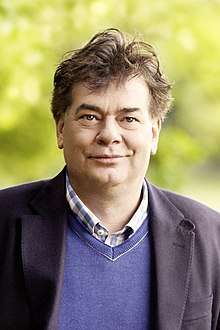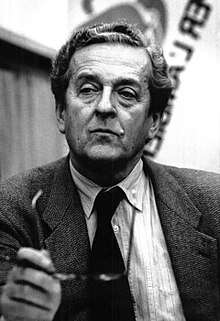European Green Party
The European Green Party (EGP), sometimes referred to as European Greens, is the European political party that operates as a federation of political parties across Europe supporting green politics. The EGP cooperates with the European Free Alliance (EFA) to form the Greens–European Free Alliance (Greens/EFA) parliamentary group in the European parliament.
European Green Party | |
|---|---|
 | |
| President | Evelyne Huytebroeck and Thomas Waitz |
| Secretary-General | Mar Garcia |
| Founded | 21 February 2004 |
| Preceded by | European Federation of Green Parties |
| Headquarters | Rue du Taciturne 34, 1000 Brussels, Belgium |
| Think tank | Green European Foundation |
| Ideology | Green politics[1] Pro-Europeanism |
| Political position | Centre-left to left-wing |
| International affiliation | Global Greens |
| European Parliament group | Greens–European Free Alliance |
| Colours | Green |
| European Parliament | 67 / 705 |
| European Lower Houses | 221 / 9,874 |
| European Upper Houses | 48 / 2,714 |
| Website | |
| europeangreens.eu | |
| |
| Part of a series on |
| Green politics |
|---|
.svg.png) |
|
Core topics |
|
Four pillars |
|
Organizations
|
History
The European Green Party was founded on 22 February 2004 at the Fourth Congress of the European Federation of Green Parties (EFGP) in Rome attended by over 1,000 delegates. Thirty-four Green parties from all over Europe have joined this new pan-European party. The Greens were the first to form a political party at European level. The other European political federations followed suit in the period 2004–06. For the Greens this was the culmination of a process which had started with the formation of a loose co-ordination 1979–93 and the EFGP 1993–2004.[2]
1979 to 1993
_by_Erling_Mandelmann.jpg)
In 1979 the Coordination of European Green and Radical Parties (CEGRP) was set up to co-ordinate the participation of Green and Radical parties in the 1979 European Parliament election: There were considerable differences between the Green and Radical groups and the parties were unable to form a common pan-European electoral platform.[3] Although some parties polled well, no Green entered the European Parliament.
In the 1984 election the Greens participated again. They held a congress in the spring of 1984 in Liège and set up a restructured European Green Coordination (EGC), with a secretariat provided by the Dutch Political Party of Radicals. They also issued a Joint Declaration of the European Green Parties. Furthermore, overall the member parties had grown stronger. Eleven MEPs of member parties were elected to the European Parliament.[lower-alpha 1] They formed the Green Alternative European Link (GRAEL) in the European Parliament. The group was too small to be recognised by the Parliament for funds and committees and therefore it joined the Rainbow Group, which also encompassed regionalists, the Danish People's Movement against the European Community and some radicals and socialists.
The European Greens formed a loose confederal triangular structure with the autonomous GRAEL in parliament, the weak EGC as a supra-national co-ordinating body and the member parties. The position of the European Greens was also weakened by the principle of rotation which some member parties (Germany and the Netherlands) used, with their MEPs being replaced by another after serving half their term. This rotation technique originated with the German Greens to prevent their members being co-opted by the informal negotiation system within the Bundestag,[4] but it served them badly within the European Parliament.
For the Dutch parties, the choice for rotation was a compromise between three parties which had only two seats in parliament: one seat was kept by the top candidate while the second seat rotated between the second and the third candidate. This way each party would have a representative in the EP. Finally, there still was considerable diversity in the opinions of the Greens, especially between pro-European and Eurosceptic tendencies. These factors weakened the position of the Greens in Parliament.
In the 1989 election the Green parties won 26 seats.[lower-alpha 2] Because of political conflicts with the continuing Rainbow Group, the European Greens formed a separate parliamentary group, The Green Group in the European Parliament. During this period, the Greens became more entrenched in parliament.
1993 to 2004
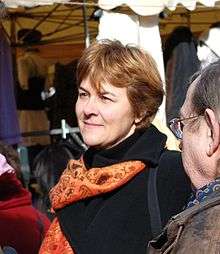
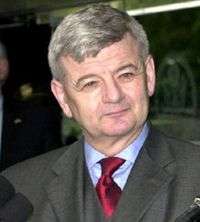
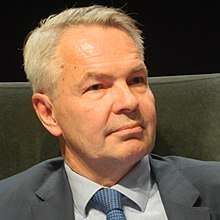
In June 1993 the European Federation of Green Parties was formed by the members of the EGC in Kirkkonummi, Finland. The organisation became more structured, it now had a triennial Congress, a Council and a Federation Committee (executive). It strengthened its ties with the Green Group in the European parliament.
In the 1994 European elections Green parties won a total of 20 seats.[lower-alpha 3] They were joined by a member of the Danish Socialist People's Party and one member of both the Italian South Tyrolean People's Party and The Network. Again the Greens formed a separate group from Rainbow Group, now renamed the European Radical Alliance.
In the 1999 European elections the European Greens performed particularly well winning 38 seats.[lower-alpha 4] They formed a combined group with the European Free Alliance, which represented regionalist parties and independence movements, which previously participated in the European Radical Alliance. The relationship between the Greens and these parties was different from before, as the Greens were stronger both numerically and politically.
Since 2004
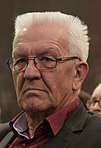
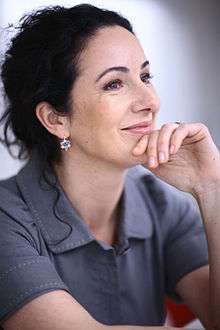
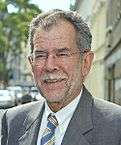
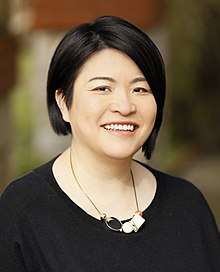
.jpg)
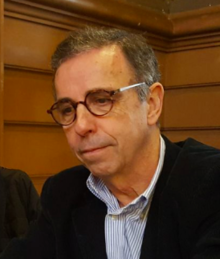
The European Green Party was founded at the Fourth Congress of the European Federation of Green Parties on 20–22 February 2004 in Rome, a party convention with over 1,000 delegates. Thirty-two Green parties from all over Europe joined this new pan-European party. The foundation of the new party was finalised with the signing of the treaty constituting the party in the Capitol of Rome. As such the Greens were the first to form a political party at European level, the other European federations followed suit between 2004 and 2006.
In the 2004 European Parliament election the member parties won 35 Seats. In the 2009 European Parliament election, even though the European Parliament was reduced in size, the EGP member parties won 46 seats, the best result of the Green Parties in 30 years.
In the 2014 European Parliament election the green candidates were José Bové and Ska Keller. The campaign was at a European level, Ska Keller participating in broadcast debates with the other candidates for the European Commission presidency.
After the economic crisis, the green parties have consolidated its presence in the local and regional level. Green mayors as Éric Piolle in Grenoble or Fritz Kuhn in Stuttgart are good examples. Femke Halsema became the second green mayor of a European capital city, Amsterdam, after Francesco Rutelli (Rome). At the regional level, Winfried Kretschmann became President of Baden-Württemberg.
Inés Sabanés and Célia Blauel are respectively members of the local governments of Madrid and Paris, being both responsible of the environment portfolio.
Alexander Van der Bellen became the first green head of state in the world, representing Austria.
The candidates for the 2019 European Parliament election, are Ska Keller and Bas Eickhout.
In the year 2020 the European Greens achieves big gains in local elections throughout Europe, being elected green mayors in Lyon, Strasbourg, Besançon, Marseille or Bourdeaux among others in France and in capital city Dublin in Ireland.
Ideology and issues
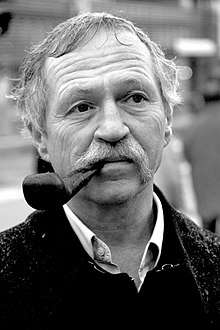
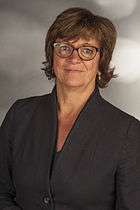
.jpg)
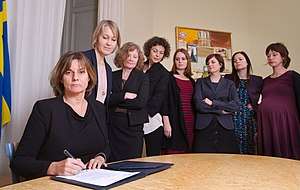
The European Greens have always been committed to basic tenets of Green politics, such as environmental responsibility, individual freedom, inclusive democracy, diversity, social justice, gender equality, global sustainable development and non-violence.[5]
However, its relationship to the European Union and its institutions has changed dramatically and is still the subject of a lively debate. In the 1970s and 1980s the European Greens were generally sceptical of European political and economic integration, which was seen as contrary to environmental and social interests. In its 1984 program, the European Greens advocated the formation of an alternative Europe, which would be neutral and decentralised. In 1989, some member parties adopted a more parliamentary course and became more supportive of European integration. The program advocates the democratisation of Europe's institutions. In their 1994 program, the Greens abandoned their principled opposition of European integration and began to propose pragmatic alternatives for the European Union's policies and institutions. The 1999 and 2004 programs also reflect this.
In the area of Internet politics, the Greens–European Free Alliance (Greens/EFA) parliamentary group became famous for the strong support of a proposed Free Information Infrastructure, especially in their work on the directive against software patents in 2003.
Nowadays the majority of the party is European federalist. Its former leader, Daniel Cohn-Bendit, is a member of the federalist The Spinelli Group, and has written with Guy Verhofstadt a book with a federalist manifesto purpose. The European Green Party affiliated to the European Movement International in February 2014.[6]
Other prominent green members of The Spinelli Group are Monica Frassoni, Isabelle Durant and Joschka Fischer, a former Vice-Chancellor of Germany and Minister for Foreign Affairs (Germany).
Representation
In this table one can see the results of the Greens for the six direct elections to the European Parliament, in terms of seats and votes. It also shows how many European Commissioners the European Greens have, who led the parliamentary group. It also lists how the Green parliamentary group and supra-national organisations was named and what European parliamentary group they joined.[7]
| Year | MEPs | MEPs % | Votes % | EC | Leaders | EP Subgroup | EP group | Organization |
|---|---|---|---|---|---|---|---|---|
| 1979 | 0 | 0 | 2.4% | 0 | none | none | none | Coordination of European Green and Radical Parties |
| 1984 | 11 | 2.5% | 4.2% | 0 | Friedrich-Wilhelm Graefe zu Baringdorf (1984–86), Bram van der Lek (1984–86), Brigitte Heinrich (1986), François Roelants du Vivier (1986), Frank Schwalba-Hoth (1986–87), Paul Staes (1987–88), Wilfried Telkämper (1987–89) |
Green Alternative European Link | Rainbow Group | European Green Coordination |
| 1989 | 25 | 4.8% | 7.4% | 0 | Maria Amelia Santos (1989–90), Alexander Langer (1990), Adelaide Aglietta (1990–94), Paul Lannoye (1990–94) |
Green Group in the European Parliament | European Green Coordination | |
| 1994 | 21 | 3.7% | 7.4% | 0 | Claudia Roth (1994–98), Alexander Langer (1994–95), Magda Aelvoet (1997–99) |
Green Group in the European Parliament | European Federation of Green Parties | |
| 1999 | 38 | 6.1% | 7.7% | 1[lower-alpha 5] | Heidi Hautala (1999–2002), Paul Lannoye (1999–2002), Monica Frassoni (2002–04), Daniel Cohn-Bendit (2002–04) |
European Greens | Greens–European Free Alliance | European Federation of Green Parties |
| 2004 | 35 | 4.8% | 7.3% | 0 | Monica Frassoni (2004–09), Daniel Cohn-Bendit (2004–09) |
European Greens | Greens–European Free Alliance | European Green Party |
| 2009 | 48[lower-alpha 6] | 6.2% | 7.3% | 0 | Rebecca Harms (2009–14), Daniel Cohn-Bendit (2009–14) |
European Greens | Greens–European Free Alliance | European Green Party |
| 2014 | 50[8][lower-alpha 7] | 6.7% | 0 | Rebecca Harms (2014–2016), Ska Keller (2017– ), Philippe Lamberts (2014– ) |
European Greens | Greens–European Free Alliance | European Green Party | |
| 2019 | ||||||||
Organisational structure
.jpg)
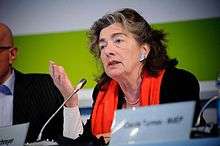
The European Green Party is an international association without lucrative purpose constituted out of political parties from European countries (although not necessarily from European Union member states). Parties can also become associate member. Members of the Green Group not belonging to a member party can be admitted as a special member with speaking rights but no vote.
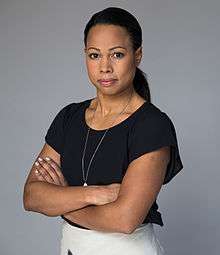
The governing bodies of the EGP are the Council and the Committee.[9]
- The Council consists of delegates of member parties. These are allotted on the basis of their most recent European or national election results. Each party has at least two delegates. The council is responsible for political affairs between congresses and it decides over organizational matters, such as the election of committee, the application of members and observers and the statutes of the EGP.[10]
- The Committee consists of nine members, including two spokespersons (one man and one woman), a secretary-general and a treasurer. They are responsible for daily political affairs, execution of the council's decisions and the activities of the EGP office and staff.
- The Congress is an enlarged meeting of the Council which is convened by the Council at least once every 5 years.
The European Greens are organised in several regional networks. These are organised around seas, creating somewhat of a bioregional structure: such as the Green Islands Network ("a network for Green Parties in Britain, Ireland and associated islands"), the Baltic Sea Greens, the Green Mediterranean Network, Green Adriatic Network and the North Sea Greens.
Membership
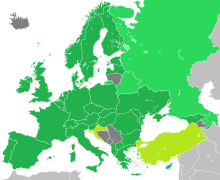
As of May 2018, the EGP comprises 37 (full) member parties, 4 associate member parties and 3 candidate member parties. These are listed in Annex B (pp. 22–23) of the respective Rule Book.[11]
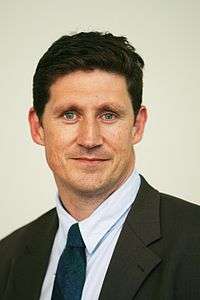
Full members
Candidate members
| Country | Name | MEPs | National MPs | |
|---|---|---|---|---|
| Sustainable Development of Croatia | – | – | ||
| United Reform Action | Not in EU | 2 / 81 | ||
| Green Left Party | Not in EU | – | ||
| sources[14][15] | ||||
Associate members
| Country | Name | MEPs | National MPs | |
|---|---|---|---|---|
| Green Party of Azerbaijan | Not in EU | – | ||
| Belarusian Party "The Greens" | Not in EU | – | ||
| Green Russia | Not in EU | – | ||
| Green Alternative[16] | Not in EU | – | ||
| sources[14] | ||||
Applicants
| Country or region | Name (in English) | MEPs | National MPs |
|---|---|---|---|
| Greens of Serbia | Not in EU | 2 / 250 | |
Former members
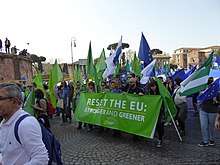
.jpg)
De Grønne from Denmark were expelled from the EGP in 2008. The reason was that De Grønne intended to co-operate with the People's Movement against the EU in the upcoming 2009 European elections, a national party which sits with the European United Left–Nordic Green Left parliamentary group instead of the Greens–European Free Alliance. The party was disbanded in 2014.
On 13 May 2012, the Council of the EGP withdrew the membership of Confederation of the Greens (Los Verdes) from Spain,[17] after several months of negotiations, and mainly because 13 out of 16 parties (formerly within the Confederation of the Greens) decided to join EQUO.
The Green Left from Hungary withdrew its membership on 7 September 2015 because of financial reasons. They disbanded in 2018.
On 10 November 2019, the Latvian Green Party was expelled from the EGP, due to its nationalist, anti-LGBT and anti-immigration views.[18]
The Greens from the Netherlands withdrew the EGP in 2017.[19]
| Country | Year left | Name | MEPs (current) | National MPs (current) |
|---|---|---|---|---|
| 2012 | De Grønne | n/a - defunct | ||
| 2015 | Green Left | n/a - defunct | ||
| 2019 | Latvian Green Party | - | 6 / 100 | |
| 2017 | The Greens | - | - | |
| 2012 | Confederation of the Greens | - | - | |
Networks
The EGP hosts a collection of networks that have specific special interest focus, including:
- Federation of Young European Greens, a federation of European Green youth organisations
- European Network of Green Seniors
- EGP Gender Network
- European Queer Greens
Elected representatives of member parties
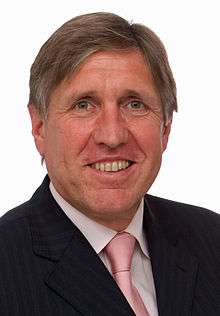
European institutions
| Organisation | Institution | Number of seats |
|---|---|---|
| European Commission | 0 / 28 | |
| European Council (Heads of Government) | 0 / 28 | |
| Council of the European Union (Participation in Government) | 5 / 27 | |
| European Parliament | 55 / 751 | |
| Parliamentary Assembly | 3 / 318 |
See also
- Accumulation by dispossession
- Alter-globalization
- Anthropological theories of value
- Anti-nuclear movement
- Club of Rome
- Common good (economics)
- Communalism
- Ecofeminism
- Ecological economics
- Environmental movement
- Ethics of care
- Green politics
- List of environmental organisations
- Low-carbon economy
- Open-source model
- Participatory economics
- Political ecology
- Post-capitalism
- Post-consumerism
- Post-growth
- Post-scarcity economy
- Queer ecology
- Rural flight
- Simple living
- Tobin tax
- Universal Basic Income
- Via Campesina
- Work–life balance
Notes
- 7 for the German Greens, 1 for the Dutch Political Party of Radicals, 1 for the Dutch Pacifist Socialist Party, an ally of the PPR, 1 for Ecolo and 1 for Agalev
- 7 for the German Greens, 8 for French Greens, 2 for the Dutch GreenLeft, 2 for Ecolo and 1 for Agalev, 1 for the Spanish IP, 2 for the Italian Rainbow Greens and 2 for the Italian Green Lists
- 12 for the German Greens, 1 for the Dutch GreenLeft, 1 for Ecolo and 1 for Agalev, 1 for the Luxembourgish The Greens IP, 2 for the Italian Federation of the Greens and 2 for the Green Party
- 7 for the German Alliance '90/The Greens, 4 for the Dutch GreenLeft, 3 for Ecolo and 2 for Agalev, 1 for the Luxembourgish The Greens, 2 for the Italian Federation of the Greens, 2 for the Green Party, 9 for The Greens of France, 2 for the Austrian Greens, 2 for the Finnish Green League, 2 for the Swedish Green Party and 2 for the Green Party of England and Wales
- Michaele Schreyer for Alliance '90/The Greens
- includes 6 independent MEPs elected for the Europe Écologie group
- Includes 14 MEPs, from 8 countries, NOT affiliated with EGP member parties.
- Dutch-speaking electoral college
- Flemish seats in the Belgian Chamber of Representatives, including seats for bilingual Brussels.
- All seats in Flemish Parliament, a legislature for both the Flanders region and the Flemish Community, and the bilingual Parliament of the Brussels-Capital Region.
- All seats for the French- and German-speaking electoral colleges.
- All seats for French and German-speaking Communities in the Belgian Chamber of Representatives, including seats for bilingual Brussels.
- All seats in the parliaments of the Brussels, Walloon Region, and the French and German-speaking Communities plus the seats for Brussels in the Flemish Parliament.
- The Irish Green Party operates also in Northern Ireland, United Kingdom as "Green Party in Northern Ireland". The Northern Irish party is separately listed in this table although it does not have separate membership in the EGP.
- Landtag of South Tyrol
- English and Welsh seats in the House of Commons of the United Kingdom.
- National Assembly for Wales
- It does not have separate membership in the EGP because it is a part of the Irish Green Party.
- Northern Irish seats in the House of Commons of the United Kingdom.
- Northern Ireland Assembly
- Scottish seats in the House of Commons of the United Kingdom.
- Scottish Parliament.
References
- Nordsieck, Wolfram (2019). "European Union". Parties and Elections in Europe. Archived from the original on 8 June 2017. Retrieved 30 May 2019.
- history of the European Green Party at EuropeanGreens.eu
- Elizabeth Bomberg (2 August 2005). Green Parties and Politics in the European Union. Routledge. p. 70. ISBN 978-1-134-85145-4.
- Hines, Eric (2003). "The European Parliament and the Europeanization of Green Parties" (PDF). University of Iowa. Archived from the original (PDF) on 28 May 2008. Retrieved 1 March 2008.
- "Charter of the European Greens". europeangreens.eu. 13–14 October 2006. Archived from the original on 4 February 2007.
- "Greens join pro-European parties' network". Retrieved 26 August 2015.
- "Directory". Retrieved 26 August 2015.
- "Results of the 2014 European elections – European Parliament". results-elections2014.eu. Retrieved 16 October 2016.
- "Statutes of the European Green Party" (PDF). europeangreens.eu. 20 May 2018. Archived from the original (PDF) on 25 January 2019. Retrieved 24 January 2019.
- "Learn about the EGP". europeangreens.eu.
- "Statutes of the European Green Party" (PDF). 20 May 2018. pp. 23–24. Archived from the original (PDF) on 25 January 2019. Retrieved 24 January 2019.
- "European Greens". European Greens.
- Although the Nov 2015 EGP register lists the Green Party of Slovakia (GPS) as a full member since 1995, the March 2017 register of EGP, omits GPS as a member within any membership category
- "Member Parties". European Greens.
- "Search". Retrieved 26 August 2015.
- Full member from 1994 to 2016. Downgraded to associate member in 2016.
- "Confederación de Los Verdes" no longer part of the European Green family (retrieved on 13 May 2012)
- "Latvian Green Party expelled from European Green Party". eng.lsm.lv. Retrieved 17 March 2020.
- https://europeangreens.eu/karlstad2017/proposal-membership-withdrawal-de-groenen-nl-0
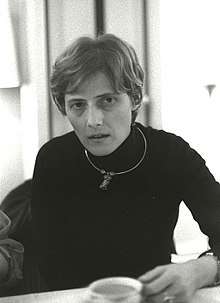
%2C_Bestanddeelnr_927-5180.jpg)
